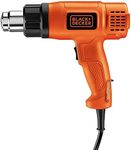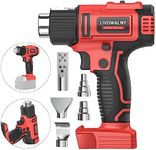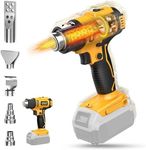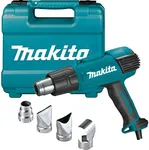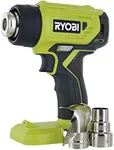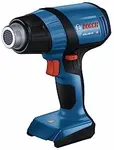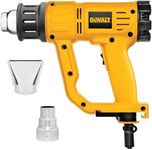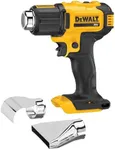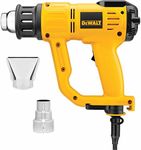Buying Guide for the Best Heat Guns
Choosing the right heat gun can make your projects easier, safer, and more effective. Heat guns are versatile tools used for tasks like paint stripping, shrink wrapping, thawing pipes, and crafting. The best heat gun for you depends on what you plan to use it for, how often you'll use it, and your comfort with handling power tools. Understanding the key specifications will help you find a model that matches your needs and ensures you get the best results.Temperature RangeThe temperature range tells you how hot the heat gun can get, usually measured in degrees Celsius or Fahrenheit. This is important because different tasks require different heat levels. For example, delicate work like crafts or electronics needs lower temperatures, while stripping paint or thawing pipes needs higher heat. Heat guns typically fall into three segments: low (around 120°C-300°C), medium (300°C-500°C), and high (500°C and above). If you only need a heat gun for light tasks, a lower range is fine. For more demanding jobs, look for a model with a higher maximum temperature. If you want flexibility, choose a heat gun with a wide adjustable range.
Airflow ControlAirflow control refers to how much air the heat gun blows out, usually measured in liters per minute (L/min) or cubic feet per minute (CFM). This affects how quickly and evenly heat is applied. Some heat guns have fixed airflow, while others let you adjust it. Lower airflow is better for precise, delicate work, while higher airflow is useful for covering larger areas quickly. If you plan to use your heat gun for a variety of tasks, look for one with adjustable airflow settings.
Power (Wattage)The power of a heat gun, measured in watts, affects how quickly it heats up and how much heat it can produce. Lower wattage (around 1000-1500W) is suitable for light-duty tasks, while higher wattage (1500-2000W or more) is better for heavy-duty jobs. If you need a heat gun for occasional home use, a lower wattage model may be enough. For frequent or demanding use, a higher wattage model will perform better and last longer.
Nozzle AttachmentsNozzle attachments are accessories that shape or direct the flow of hot air for specific tasks. Common types include concentrator nozzles for focused heat, reflector nozzles for pipes, and wide nozzles for large surfaces. Having the right attachments can make your work easier and more precise. If you have a specific project in mind, check if the heat gun comes with suitable nozzles or if they are available separately.
Safety FeaturesSafety features help prevent accidents and protect both you and the tool. Important features include overheat protection, cool-down settings, and stable stands for hands-free use. Overheat protection automatically shuts off the heat gun if it gets too hot, while a cool-down setting lets the tool cool safely after use. A stable stand allows you to set the heat gun down without risk of burning surfaces. If you are new to using heat guns or plan to use it for long periods, prioritize models with good safety features.
Weight and ErgonomicsThe weight and design of a heat gun affect how comfortable it is to use, especially for longer tasks. Lighter models are easier to handle and reduce fatigue, while ergonomic handles provide a better grip and more control. If you expect to use the heat gun for extended periods or for detailed work, choose a model that feels comfortable and balanced in your hand.
